This article is part of a series called How to Write a Resume. To start this series from the beginning, read the introduction.
Your resume is a body of work. It’s got a head, a body, and perhaps a footer. Hopefully you don’t make an a$$ of yourself when the parts are pieced together. The resume vitals are obvious, you’ve got to list your name and experience. But in what order? Should you include an objective or summary? Where should you list your education?
To help you piece the body of this important document together, let’s dissect the anatomy of a killer resume. So you don’t get slaughtered when applying for work, the parts of a “not so killer resume” are also covered.
| Resume Writing Series: |
|---|
To help you land a job interview, here is the anatomy of a killer resume:
1. Your Contact Information
The head of your resume should list your contact information. This resume part is straightforward: name, address, telephone number, and an email address. Your resume dies on the hiring manager’s desk if you miss one of these elements.
Listing your name should be a no-brainer. But don’t lose your head because of a bad email address. Many people face the chopping block on this part alone.
BAD Email Addresses
- pervy@P0rnilicious.com
- beer_drinker@hops.com
- dog_crazy@pets.com
GOOD Email Addresses
- jane_smith@email.com
- j.smith@email.com
- jane_j_smith@email.com
Is your answering machine message deadly? When in the market for a job, be sure your answering machine has a respectable message. I’ve called a few job candidates only to hear off-putting messages on their machines. Keep it clean. Keep it simple.
2. Your Objective or Summary (or screw both)
A resume Objective or Summary can help describe the value you bring to a prospective employer and entice a hiring manager to read your resume. A poorly written Objective or Summary can kill your shot at a job interview. Most resume Objective and Summary statements fail to inspire for these reasons:
- They are poorly written.
- They are not tailored to the position.
- They focus on the job seeker.
- They fail to match job seeker skills to employer requirements.
So how do you decide between writing a Summary or Objective for your own resume? It’s not complicated. Promise.
Use an Objective if:
- You are starting out or entering the workforce.
- You are returning to the workforce after an extended absence.
- You are changing careers or industries.
Use a Summary if:
- You have several years of experience in the sought after position.
- You have established qualifications.
- You have skills matching employer requirements.
Screw both if:
- You don’t want one.
- You don’t need one for your industry or job.
- You have limited resume room to focus on skills and experience.
As a hiring manager I must be honest, I tend to skip reading these statements and flip to the job seeker’s Skills and Experience. I suppose I skim since most statements are written rotten. If you’re not going to write it right, then screw the statements and use your resume room to focus on what skills and experiences benefit the employer.
Writing it Right: Objectives and Summaries
The vast majority of job seekers write Objectives and Summaries focusing on their career wants and job needs. This is a fatal error. News flash: Your resume isn’t about you. It’s about how you fit the employer’s job requirements. What can you do for the employer? What does an employer gain from hiring you?
Write these statements well by focusing on your relevant experience, keeping it brief, and by removing all personal pronouns (Me, Myself, and I). Let’s look at some killer statements and those that kill your job opportunities.
Career Objective
The BAD Objective below presents several fatal errors. It is generic and mentions nothing of specific employer requirements. It is job seeker focused, using personal pronouns. It offers no skills or experiences and fails to sell the job seeker’s abilities.
BAD Job Seeker Focused
OBJECTIVE: I want a software development position in the high technology industry that can utilize my three years of programming skills and lead to a management role.
Compare the BAD to the GOOD. The GOOD example presents the job seeker’s skills, clarifies educational background, and offers value to the employer’s customers. Always a good mix.
GOOD: Employer Focused
OBJECTIVE: A position in software development requiring programming skills in C++ gained from a degree in Computer Science and three years of experience, helping technology companies deliver customer focused software.
Professional Summary
Here is an example of a killer Summary statement. Notice the skills and experience the job seeker offers to a prospective employer.
GOOD Job Seeker Focused
PROFESSIONAL SUMMARY: Software Development professional with three years experience programming in C++ and Java. Highly skilled in specifications gathering, troubleshooting, and quality assurance testing. Fluent in English and German.
Be sure to keep your statements SHORT. No more than 50ish words. Anything longer and you’ll kill your resume.
3. Your Professional Experience
The Experience section is the body of your resume. It is the heart of the matter. If written well, it can make a hiring manager’s heart race with excitement. If phrased correctly, your experience will land you job interviews.
The name of this section can vary, with: Professional Experience, Experience, Work History, or Work Experience. Whatever you call it, be sure this section does more than list your past job duties or requirements. Use the Experience section to highlight your accomplishments and to show how you achieved results in a particular role. Use action verbs and active voice descriptions to highlight your sense of initiative. Describe each of your accomplishments using a simple, powerful, action statement and emphasize how you can benefit an employer.
The BAD Professional Experience description contains many deadly deeds. It lists job duties. It reads like a poorly-written job description. It contains a spelling error. It uses personal pronouns, leaving out the value offered to an employer. It lacks action verbs and excitement. It fails to differentiate the job seeker from other candidates. This dead description hits my paper shredder for sure.
BAD Professional Experience Description
Intermediate Programmer
January 2008 to Present
Widgets Digits Software, Mountain View, CA
- I programmmed software.
- I tested software.
- I debugged software.
- I worked in a team.
- I trained new grad hires to program and test software.
The GOOD Professional Experience Description is a killer. My heart races when I read these action words in action. This description lists skills with accomplishments and shows the value this job seeker brings to an employer.
GOOD Professional Experience Description
Intermediate Programmer
January 2008 to Present
Widgets Digits Software, Mountain View, CA
- Programmed award-winning educational software using the C++ programming language.
- Wrote quality assurance and software testing plans. Product shipped with 15 percent less customer support calls than previous versions.
- Facilitated critical support calls and solved customer issues.
- Managed a team of three junior programmers who exceeded department goals and received promotions.
After reading the BAD and the GOOD, who would you rather hire?
3. Your Education
Pass or fail, make sure the Education section makes the grade on your resume. The Education section can appear at the head or foot of your resume, depending on when you graduated. If you’re a new graduate, you should probably list your Education at the beginning. If you’ve been out of school for decades, de-emphasize your Education by listing it last. Here are some Education writing tips for those who want job honors:
- List your highest level of education first. Take a pass on listing your high school diploma if you have a degree.
- Write out school names (University of British Columbia, not UBC).
- Never embellish your educational credentials. (Doctor of what?).
- If you’re a new graduate, keep transcript copies in case an employer inquires.
The BAD Education section deserves the dunce cap. The job seeker failed to spell out the university name, offered dubious extra curricular activities worthy of visiting the principal’s office, listed high school diploma despite having graduated from college.
BAD Education Section
UBC, 1995
Vancouver, BC
BSc., Computer ScienceAlpha Delta Ohmygosha Fraternity, Frosh Drunking Member
Vancouver High School, 1991
Vancouver, BC
Diploma
The GOOD Education section goes to the head of the class. This job seeker offers the right academic mix.
GOOD Education Section
University of British Columbia, 1995
Vancouver, BC
Bachelor of Computer Science, High Honors
4. Deadly Anatomy Don’ts
Some popular resume elements have gone out of style, so keep them from killing your resume by omitting them. For example, stop writing “References available upon request” at the end of your resume. It’s implied. If a prospective employer wants to interview you, they will ask for references.
Take a stab at these 10 Deadly Sins of Resume Writing to help keep you on the interview list.
Reader Question:
What sections do you put on your resume?
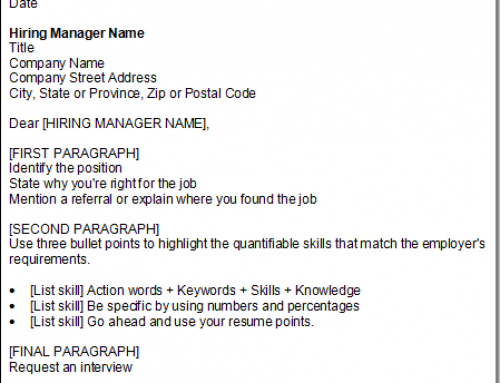
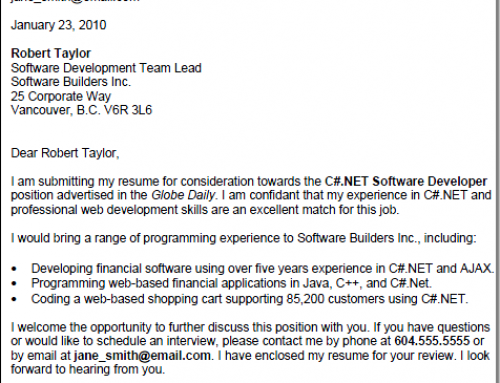
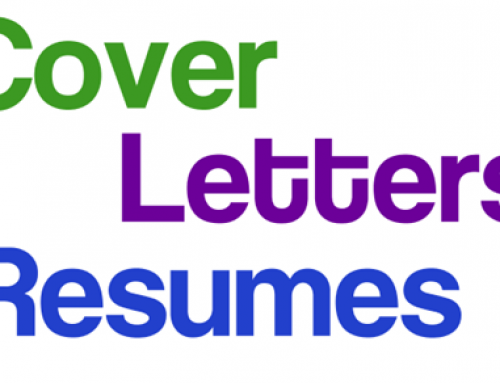
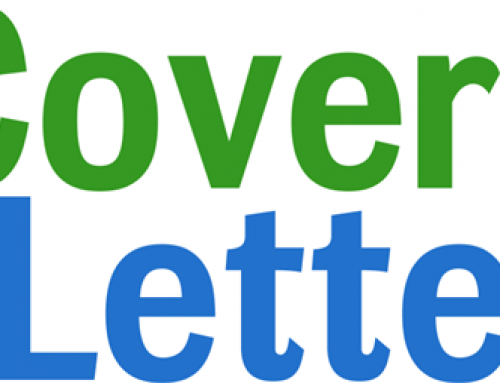
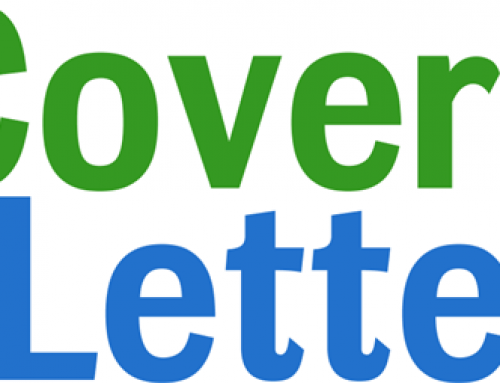
Wow, I think I found the place to look at for my resume writing venture. These are actually easy to follow. I’ve just started out my free online resume at this student resume network-nuResume.com. And all I did was mess up my words. I better refurbish those. Bookmarking this page ^-^
@haley I’m so happy you found us. I’m working on finishing this resume writing series, so hopefully you’ll find more resume tips in future articles!
That’s a lot of information! It has been WAY too long since I last updated my resume…
I’m a contractor and can sometimes have many different short-term contracts – how do I show this on my resume so that it doesn’t look like I jump around a lot?
By definition, I don’t stay at a company for more than a year or two.
My current contract is technically only 7 months, but I hope they extend it.
@Sagan It is a longerish post.
@TStrump My career history is much like yours. I’ve switched around lots. I’ve also changed careers plenty. For this type of situation I have used two types of resumes, the Chronological resume and the Functional resume.
Chronological resumes list your work experience in reverse chronological order, starting with your current position and working back. The Functional resume format focuses attention on skills and achievements by grouping these experiences together.
Many hiring managers are suspicious of candidates touting Functional resumes since they are also often used to hide spotty employment records.
I’d say stick with Chronological and note you’re a contractor. Contracts end, and this is why you moved on.
I wonder if you would be able to say a word or two (or link to someone else) about CVs? For those of us in academia, standard resume advice is not appropriate.
This is really REALLY nicely written. So nicely formatted and the content itself contains so many useful tips. I feel like updating my CV just because.
@Monica Feel free to link to an academia resume source. I’ll talk to a few of my Prof friends too, perhaps I can write something for those academic types. (It’s scary, but I do have several friends who are PhD’s and are Profs teaching at university).
(It’s scary, but I do have several friends who are PhD’s and are Profs teaching at university).
@Jude If you send me a German Chocolate Cake, a Pumpkin Swirl Bread, and two dozen Ginger Snap Cookies I may just be tempted to write that resume for you. You are THE BLOG for stunning, delectable, goodies. Seriously.
You are THE BLOG for stunning, delectable, goodies. Seriously.
Thanks for the post!! Great advice.
Thanks for sharing! Great advice.
I think it’s important in this day to think about the global market too. Will the resume you write for that job in San Diego be the write format for that attractive offer in Nice, France? Maybe, maybe not.
As an ex-pat living in France, I can say from experience that an “Objecive/Summary” is obligatory on a resume here. Many companies still require a photo; something I was quite surprised by and remain intolerant of as it’s clearly an indication they are influenced by an applicants physical traits as much as anything else. Also, there’s really no distinction between resumes and CVs here (that I’ve witnessed); everything is just a “CV” regardless of the domain.
Nevertheless, after reading your series so far, particularly the article after this one, I’d say your covering the fundamentals well and they should work for a resume used anywhere, if but after a little research to learn what are the norms in a given location.
Uh…that should be “you’re covering…”, and I’m not opposed to sharing my photo (heh), I just don’t like jobs asking for one ahead of time; it verges on being non-PC.
I think it goes without saying the résumés are culture specific. Employers’ expectations and the “write” [sic] format will vary from country to country and even, to some degree, from industry to industry.
The last time I worked in France, not only was a photo expected, but handwritten cover letters were de rigueur. In the U.S. that would be considered unacceptably sloppy, while in France a typewritten cover letter could cause employers to suspect that you were trying to hide something from their graphologist (seriously).
“handwritten cover letters were de rigueur”
Ha! I forgot about that. Yes, it’s true, though considerably much less so now (photos too), and even then it’s mainly for clerical fields, as far as I can tell. I’ve never seen it for jobs I’ve applied for in web-related positions, and photos are optional, if they’re even asked for at all.
This new age of social media and the idea of branding oneself may bring the resume photo back in style. I easily see using a single, well-chosen image for all outward facing communication: gravatars, member profiles, web site “About” pages, contact directories, and resumes to name a few possibilities. The possible advantage being to 1) give a good first impression to potential employers, clients, consumers or what have you, and 2) make it easier for employers to make the connection on you should they follow up your social media links.
It’s plausible.
[REDACTED],
I find you very, very handsome! In the United States, we don’t send photos with our resume, it would be considered discrimination if an employer asked for a photo. However, I wish they did as it’s been studied and proven time and again that attractive people most often get the job. I’d love to send a photo with my resume, especially if it would increase the chance of invitation to interview. As it is at the moment, I can’t seem to get anyone to call for an interview and I write very well. I wish I could send my resume to Fox and get Fox’s professional opinion on how I might better write my resume!
Hmm…to pic or not to pic? I have been seriously considering including my photo on some resumes. As a career-changer (teacher to something!) I’ve been out of the resume business for quite some time. I am creating a resume for a fundraising coordinator position at a local children’s hospital. The photo I’m considering captures the essence of who I am…creative, enthusastic, kid-centered. While I want to retain my professionalism, I also want to give HR every reason to keep my resume on top. Opinions please. Thanks!
What’s a ping?
@kim maginn A “Ping” is just a list of other blogs linking back to this post. It is very nerdy. I think it should read, “Blog Reactions” or something similar. When I’m done with this crazy writing project I’ll change it.
On the photo resume, my personal preference is to go without the photo.
How would you handle listing your education, if you never completed a degree? Or if you have gone back and forth to school over time and attained your degree much later in life???
Thank you so much! This info help me out. It took me about an hour and a half to do my resume from scratch, and without this it wouldve taken easily 3 hours! THANKS
@Syrah Go ahead and list it if you feel it is applicable to the position, otherwise it may be wise to leave it off since it was not completed.
You write, “If you’ve been out of school for decades, de-emphasize your Education by listing it last.”
I finished high school but I did not finish university. I do have 2 computer certificates and a real estate license. Right now, I am applying for coordination or supervisory positions since I have been out of the computer industry for 10 years. My most recent work experience was in event planning.
Is it still a good idea to list what program I was following in university even though I did not finish? I was in university 25 years ago.
Thank you.
Great Site Mrs. Taylor, very helpful, and informative! I hadn’t updated my resume for years, and found myself very intimidated by a lot of the ‘new’ rules. I like your writing style as well, helps break up such serious stuff! Thanks for having a great, free and helpful site!
– Kevin
Outstanding post! I completely agree. Well stated!
Hello Kerry ! Thanks for your blog and books. I really enjoyed them. I had a question about CV.
I actually did two master degrees in two domains which are in competition with one another. I was wondering if it is ethically responsible not to mention some of my Academic training to land an interview ? Once I’m in the interview I know I will perform well, but I am afraid that they will discard my CV either because I’m overqualified or because they don’t like the fact that I have dual training. Thank you for your input!
In this age of online scams (heard of it yet?), it is not advisable to give out your name, address, ph# and e-mail (especially the one you are using for your job-search) – all in one package. Why should I even publish my ph# and address in such an environment (unless of course if I am so sure of the genuinity of the advertiser). There are still hundreds of fake-business websites still up and running, by the way! So, be careful when you apply directly through websites. I am not a fearmonger, but let’s not forget that as such we are leaving our digital signatures in the websphere to eventually pay for it! So, why can’t recruiters be happy with an e-mail address? Safe identity, safe searching, safe business! That’s new age.
As someone approaching 50 (but I look years younger!) I strongly advise against listing the dates you earned your degree(s). There is a lot of age discrimination out there.
As someone who is over 50, I believe that you should place your education and skills, followed by your work history. An excellent idea is to list volunteer experience as well. References should not be provided unless they are requested. I also find that the positions with higher risk and investment are usually assumed by this demographic. These include things like commission sales and small business start-ups.
This is very use full and very helpful. I am moving to another state and will be looking for a new job after 10 years with this company and was needing to spruce up my resume. Thanks for the helpful tips.
Hi thanks for the information. I have been unemployed for 8 years due to incurable diseases, I was only on state benefits for 3 of those years. Physically and psychologically I have taken a battering but I need to return to work now I’m in remission. I don’t know where to start. I only have 3 years experience in high stress tech support and below average academic grades.